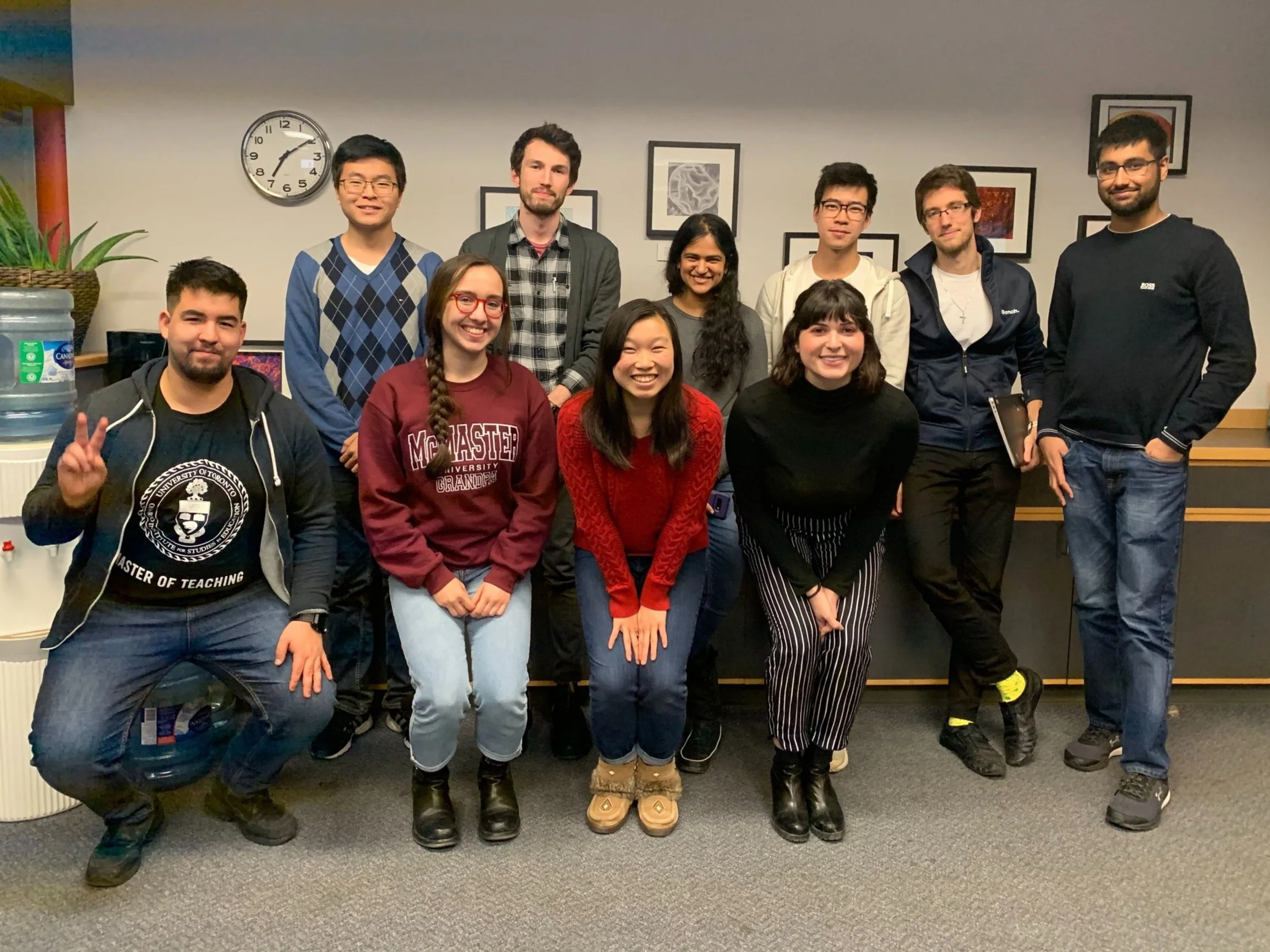CSBERG: Developing SynBio Education
Patrick Diep - December 13, 2019
The Canadian Synthetic Biology Education Research Group (CSBERG) logo - contributed by Patrick Diep
I believe it was on Twitter when I saw someone tweet that synthetic biology (synbio) was a subject that should stay within the realm of graduate students and postdocs in academic research labs because it was “too hard for undergrads”. This is a common sentiment in synbio, and it wasn’t my first time hearing it, but it struck a nerve because I was heading to Boston in a few months for my third time judging for iGEM (International Genetically Engineered Machine, an annual synthetic biology design competition) . I thought about how iGEM was my entry point for research during my undergraduate studies and about how awesome some of these iGEM projects can become. I’ve attended five iGEM jamborees now and have had the chance to witness how synthetic biology projects flourish from high school, undergraduate, and overgraduate (i.e. graduate student-based) teams. Synbio is not too hard for undergrads.
Gatekeeping synthetic biology hampers its big promises to help tackle a variety of issues in fundamental science and real-world issues. I understand the opinion that one needs to enter synbio with their own expertise in order to more effectively work with other experts, and having a specialized undergraduate program helps with that. But instead of restricting access because of the “too hard for undergrads” notion, maybe we can consider whether there is anything we can change at the undergraduate level to make the transition to synbio graduate work and industry more streamlined. Not multidisciplinarity, but interdisciplinarity.
So, I asked myself a big question: how does one teach a highly interdisciplinary subject to a mixed audience composed of undergraduates from experimental, computational, engineering, social sciences, and humanities backgrounds? Participating in the iGEM competition provides students with a strong situated learning experience where students from all these backgrounds must work together to fulfill the iGEM competition medal criteria, but there is limited research that explores the learning dynamics in iGEM design teams. Based on conversations with iGEM judges and professors, and my own observations, iGEM undergraduate alum become excellent graduate students. How can these success stories be translated into elements of synbio curriculum design within and beyond iGEM?
The CSBERG Instructor Team - contributed by Patrick Diep
I decided to investigate this big question, but I knew I could not do it alone. With Katariina Jaenes’ help, a colleague and friend from Professor Keith Pardee’s lab, we created and delivered an introductory synbio workshop to the undergraduate iGEM Toronto design team at UofT, in May 2019. It was well-received, but we learned very fast that teaching synthetic biology requires a team of experts, and that two experimentalists like us could not pull it all off. So, I later formed the Canadian Synthetic Biology Education Research Group (CSBERG) in August to investigate this question. CSBERG is a graduate student-led “teaching R&D” program for synthetic biology at the undergraduate level. We consist of iGEM Toronto/Calgary/Waterloo alum (many now graduate students), BioZone graduate students, and colleagues from multiple universities in Ontario and Québec.
CSBERG has a clear deliverable that everyone on this team is working toward: a 1-month intensive workshop series (May-June 2020) to teach a mixed audience the knowledge and tools required to plan and execute a synthetic biology design challenge. Based on our collective understanding of synbio at the graduate level and from previous iGEM competition experience, we are placing a special emphasis on developing leadership, teamwork, communication, and collaborative skills to empower the students to work better in groups. We are also placing a special emphasis on integrating the various topics that we will be teaching so that students can understand how tools in other disciplines are used. To guide us in developing the specific workshop content, we are conducting a survey of all 2019 Canadian iGEM design teams to identify educational gaps that we could address in our workshop series. Finally, to gauge our teaching effectiveness, we are designing educational experiments with assistance from OISE (Ontario Institute of Studies). All this work will go through the Office of Research Ethics (at UofT) for approval, and we hope to publish our findings for our stakeholders.
Overall, CSBERG’s existence is a response to the notion that synbio is “too hard for undergrads” – it’s not. More time and concerted effort must be put into critically breaking apart traditional pedagogy for related disciplines (e.g. biochemistry, molecular biology, bioethics, chemical engineering, etc.) and re-building it with contemporary teaching strategies and integrated feedback from relevant stakeholders. We envision our work informing the development of upper-year courses that help senior undergraduate students interface their speciality knowledge and tools with those of other experts in order to address synthetic biology design challenges from an interdisciplinary approach.
To keep up to date with our work, we encourage you to follow us on Twitter. CSBERG values far-fetched untested teaching ideas (we literally have a document for this), so if you’re especially passionate about teaching courses/content related to synbio, we invite you to message us at csberg.biozone@gmail.com for support, or perhaps a collaboration! We are also looking for financial sponsors and advisors (i.e. principle investigators) to support the growth of CSBERG, so please e-mail us if you are interested.
Cheers,
Patrick
Patrick Diep is a 3rd year PhD student under Professors Krishna Mahadevan and Alexander Yakunin in BioZone, a bioengineering cluster in the Department of Chemical Engineering and Applied Chemistry at the University of Toronto. He is genetically engineering microbes to remove and recover heavy metals from mine wastewater and is program director for CSBERG, which also provides oversight for the revitalized iGEM Toronto design team.


